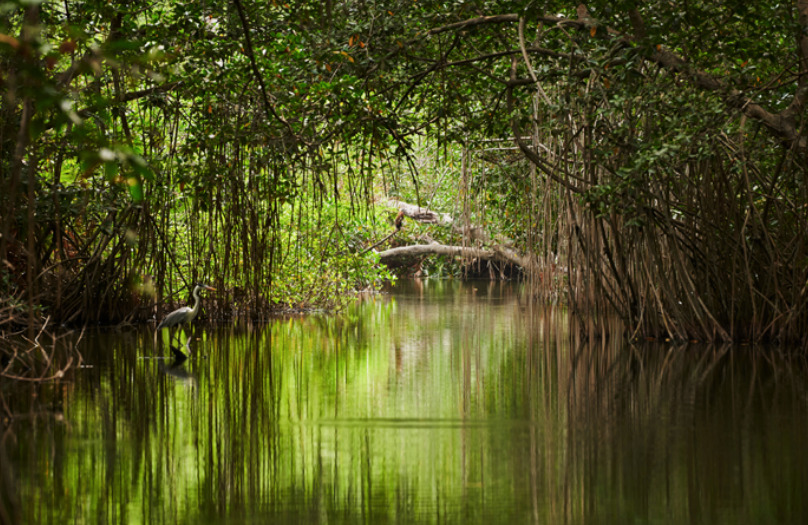Conservation International & Apple have teamed to protect mangrove forests
Apple is working with Conservation International to protect and restore a 27,000-acre mangrove forest in Cispata Bay, Colombia, in a bid to preserve a slowly disappearing part of the ecosystem.
Part of Apple's Give Back campaign for Earth Day 2018, the project has Apple providing Conservation International with resources to try and rebuild parts of the mangrove forest. Working with local communities, the project intends to to create a carbon financing model to incentivize conservation and restoration of mangroves in the region.
Pressures from illegal farming, fishing, and logging are threatening the existence of mangroves, which have been shown to store up to 10 times the amount of carbon per acre as land-based forests. When destroyed, the ecosystems emit the stored carbon into the atmosphere, with as much as 1 billion metric tons of carbon dioxide released annually from degraded coastal ecosystems.
For reference, that is the equivalent in total emissions from US-based cars, buses, aircraft, and boats for all of 2017.
In total, the partnership expects to sequester 1 million metric tons of carbon dioxide over its lifetime. The project also aims to be the first in the world to "fully quantify blue carbon credits in both trees and soil." Blue carbon is the term used to refer to carbon stored in sediment below the water line.
if successful, the project could become a model for scaling carbon sequestration in global mangrove ecosystems, cutting down the emissions that are caused by deforestation.
"These forests are critical because they're one of nature's most important tools in the battle against climate change," said Apple VP of Environment, Policy, and Social Initiatives Lisa Jackson. "Globally, we've lost half of the world's mangrove forests since the 1940s - so it's high time we start preserving and protecting them."
Outside of their carbon-related benefits, the mangrove forest also provides other benefits to the coastal communities, including protecting villages from storm surges, as well as providing food and wood supplies. Those same communities are working with organizations to restore mangroves in the region.
Hundreds of families coexisting with the mangroves are taking part in a variety of programs designed to allow them to continue living off the mangrove sustainably while protecting it. In one case, a rotation plan allows for areas of a mangrove to be in use while others are left to recover and restore itself.
Where previous attempts to cut trees didn't use any technical knowledge about ecosystems, with forest dwellers using only what they learned from watching earlier generations, modern felling attempts take advantage of technical knowledge from partner operations.
"We take from the mangroves, but we're also preserving them,' said Canchila Avila, who coordinates cutting and mangrove clearing to maintain water flow while also issuing permits for wood cutting for construction purposes. "If we find an area with very few trees, we know that it needs rehabilitation and it needs to recuperate. We let that area restore and we add trees."
The update on the mangrove project is one of a number of ways Apple is marking Earth Day. Along with an expansion of its recycling programs, the App Store and Today at Apple Sessions at Apple Stores will be themed for the occasion, and Apple Watch users will be able to earn a special "Earth Day" award and stickers if they complete a 30-minute workout outside.
 Malcolm Owen
Malcolm Owen











 William Gallagher
William Gallagher
 Christine McKee
Christine McKee
 Michael Stroup
Michael Stroup
 William Gallagher and Mike Wuerthele
William Gallagher and Mike Wuerthele


 Chip Loder
Chip Loder
 Andrew Orr
Andrew Orr






